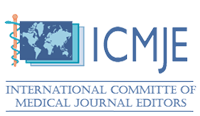ИНФОРМАЦИОННЫЕ ПРЕДПОЧТЕНИЯ ПАЦИЕНТОВ В КОНТЕКСТЕ КОММУНИКАЦИИ НА ВЕБ-САЙТАХ МЕДИЦИНСКИХ ОРГАНИЗАЦИЙ
Аннотация
Обоснование. Развитие цифрового общества подчеркивает значение коммуникаций в сфере здравоохранения в Интернете, однако, они преимущественно рассматриваются с позиции экспертных оценок, а не предпочтений пациентов.
Цель. Изучить информационные и потребительские предпочтения взрослого населения РФ на веб-сайтах медицинских организаций (МО).
Материалы и методы. В исследование были включены 1319 респондентов интернет-опроса, оценивших важность информационных и функциональных элементов веб-сайтов МО по шкале от 1 («Совсем не важно») до 5 («Очень важно»).
В исследовании был проведен расчет удельного веса отметивших важность информации и функций веб-сайта МО, а также последующий факторный анализ методом главных компонент с вращением типа варимакс. Статистическая обработка осуществлялась с помощью IBM SPSS Statistics 26.
Результаты. Наибольшее значения для респондентов имели контактная информация (77,8%; 95% ДИ 75,5–80,0%), отзывы пациентов (65,8%; 95% ДИ 63,2–68,3%), информация о специалистах (65,0%; 95% ДИ 62,4–67,6%), скорость загрузки веб-сайта (64,6%; 95% ДИ 62,0–67,1%) и его адаптивность (63,0%; 95% ДИ 60,4–65,6%). Факторный анализ позволил выявить шесть факторов, обусловивших 43,3% дисперсии: (1) интересовавшихся общей информацией о МО; (2) предпочитавших использовать онлайн-возможности; (3) интересовавшихся публикациями о здоровье; (4) визуалов, отметивших важность дизайна и фотографий МО; (5) нуждавшихся в мерах социальной защиты или имевших ограничения здоровья; (6) интересовавшихся новостями организации и ее общественной деятельностью.
Заключение. Медицинским организациям необходимо предоставить выходящий за пределы существующих требований нормативно-правовых актов набор информации и функций веб-сайта, соответствующих предпочтениям потребителей медицинских услуг.
Скачивания
Литература
Anketolog JSC. Mozhno li doveryat’ telemeditsine? Mnenie rossiyan [Can we trust the telemedicine? Russians’ opinion]. https://iom.anketolog.ru/2020/05/27/telemedicina-2020 (accessed September 16, 2021).
Goriachev N.A., Goriachev D.N, Varlamov S.V. Innovatsionnyy marketing v stomatologicheskom biznese [Innovative marketing in dentistry business]. Problems of modern economics, 2017, no. 1(61), pp. 93-97.
Grishina M.A. Health communication: Theoretical and practical aspects. Health risk analysis, 2018, no. 2, pp. 138-150. https://doi.org/10.21668/health.risk/2018.2.16
Kolgashkin A.J., Kucherov J.N, Tetenova E.J. Nadezhdin A.V. Information on state addiction clinics in internet. Critical analysis. Narcology, 2015, no. 9, pp. 11-17. http://www.narkotiki.ru/50_2078.htm
Krasnostavskaya N.V., Shevtsova I.E. Behavior of individual consumers of services of private medical centers on the pre-procurement stages in the virtual space. The Eurasian scientific journal, 2018, vol. 10, no. 2, pp. 27. https://esj.today/86ecvn218.html
Muravieva V. N., Muraviev A.V., Khripunova A. A. et al. Web resources of the medical organizations as a mechanism to improve access medical care. Medical news of North Caucasus, 2016, vol. 11, no. 1, pp. 114-116. https://doi.org/10.14300/mnnc.2016.11013
Polukhin N.V. The basic framework for health facilities’ websites quality evaluation. MIA Medical Bulletin, 2021, vol. 113, no. 4(113), pp. 68-73.
Halfin R.A., Syrtsova L.E., Lvova D.P et al. A patient-centered approach: basic concepts. Health care standardization problems, 2017, no. 1-2, pp. 9-13. https://ps.newdiamed.ru/issue/id30811/id30820
Khodakova O.V., Evstaf’eva Yu.V. The complex assessment of official web-sites of medical organizations. Health care of the Russian Federation, 2017, vol. 61, no. 2, pp. 70-75. https://doi.org/10.18821/0044-197X-2017-61-2-70-75
Ekkert N.V., Polukhin N.V. Presentation of information for consumers of medical services on the websites of health facilities: problems and solutions. Medical Technologies. Assessment and Choice, 2019, no. 3(37), pp. 62-70. https://doi.org/10.31556/2219-0678.2019.37.3.062-070
Bouyer-Ferullo S, O’Connor C., Kinnealey E. Adding a Visual Communication Tool to the Electronic Health Record to Prevent Pressure Injuries. AORN Journal, 2021, vol. 113, no. 3, pp. 253-262. https://doi.org/10.1002/aorn.13323
Coughlin S.S., Prochaska J.J., Williams L.B. et al. Patient web portals, disease management, and primary prevention. Risk Management and Healthcare Policy, 2017, vol. 10, pp. 33-40. https://doi.org/10.2147/rmhp.s130431
Guenther L., Gaertner M., Zeitz J. Framing as a Concept for Health Communication: A Systematic Review. Health Communication, 2021, vol. 36, no. 7, pp. 891-899. https://doi.org/10.1080/10410236.2020.1723048
Jacobs W., Amuta A.O., Jeon K.C. Health information seeking in the digital age: An analysis of health information seeking behavior among US adults. Cogent Social Sciences, 2017, vol. 3, no. 1, pp. 1302785. https://doi.org/10.1080/23311886.2017.1302785
Hunsaker A. Hargittai E. A review of Internet use among older adults. New Media & Society, 2018, vol. 20, no. 10, pp. 3937-3954. https://psycnet.apa.org/doi/10.1177/1461444818787348
Ishikawa H. Kiuchi T. Health literacy and health communication. BioPsychoSocial Medicine, 2010, vol. 4, no. 1, pp. 18. http://dx.doi.org/10.1186/1751-0759-4-18
Kreps G.L. The value of health communication scholarship: New directions for health communication inquiry. International Journal of Nursing Sciences, 2020, vol. 7, no. Suppl 1, pp. S4-S7. https://dx.doi.org/10.1016%2Fj.ijnss.2020.04.007
Latifi R., Doarn C.R. Perspective on COVID-19: Finally, Telemedicine at Center Stage. Telemedicine and e-Health, 2020, vol. 26, no. 9. pp. 1106-1109. https://doi.org/10.1089/tmj.2020.0132
Lee H.Y., Jin S.W., Henning-Smith C. et al. Role of Health Literacy in Health-Related Information-Seeking Behavior Online: Cross-sectional Study. Journal of Medical Internet Research, 2021, vol. 23, no. 1, pp. e14088. https://doi.org/10.2196/14088
Malikhao P. Health Communication: Approaches, Strategies, and Ways to Sustainability on Health or Health for All. Handbook of Communication for Development and Social Change. Servaes J. (editor). Singapore: Springer, 2020, pp. 1015-1037. https://dx.doi.org/10.1007%2F978-981-15-2014-3_137
Monaghesh E. Hajizadeh A. The role of telehealth during COVID-19 outbreak: a systematic review based on current evidence. BMC Public Health, 2020, vol. 20, no. 1, pp. 1193. https://doi.org/10.1186/s12889-020-09301-4
Nutbeam D. Lloyd J.E. Understanding and Responding to Health Literacy as a Social Determinant of Health. Annual Review of Public Health, 2021, vol. 42, no. 1, pp. 159-173. https://doi.org/10.1146/annurev-publhealth-090419-102529
Özkan S., Tüzün H., Dikmen A.U. et al. The Relationship Between Health Literacy Level and Media Used as a Source of Health-Related Information. HLRP: Health Literacy Research and Practice, 2021, vol. 5, no. 2, pp. e109-e117. https://dx.doi.org/10.3928%2F24748307-20210330-01
Peterson E.B., Chou W.-Y.S., Kelley D.E. et al. Trust in national health information sources in the United States: comparing predictors and levels of trust across three health domains. Translational Behavioral Medicine, 2020, vol. 10, no. 4, pp. 978-988. https://doi.org/10.1093/tbm/ibz066
Purcarea V.L. The impact of marketing strategies in healthcare systems. Journal of Medicine and Life, 2019, vol. 12, no. 2, pp. 93-96. https://dx.doi.org/10.25122%2Fjml-2019-1003
Rice L., Sara R. Updating the determinants of health model in the Information Age. Health Promotion International, 2019, vol. 34, no. 6, pp. 1241-1249. https://doi.org/10.1093/heapro/day064
Sukawati T.G.R. Hospital Brand Image, Service Quality, and Patient Satisfaction in Pandemic Situation. Jurnal Medicoeticolegal dan Manajemen Rumah Sakit, 2021, vol. 10, no. 2, pp. 119-127. https://doi.org/10.18196/jmmr.v10i2.12230
. Thai C.L., Gaysynsky A., Falisi A. et al. Chapter 2: Trust in Health Information Sources and Channels, Then and Now: Evidence from the Health Information National Trends Survey (2005–2013). eHealth: Current Evidence, Promises, Perils and Future Directions (Studies in Media and Communications, vol. 15). Hale T.M., Chou W.-Y.S., Cotten S.R., Khilnani A. (editors). Bingley: Emerald Publishing Limited, 2018, pp. 43-67. https://doi.org/10.1108/S2050-206020180000015002
Turchioe M.R., Grossman L.V., Myers A.C. et al. Visual analogies, not graphs, increase patients’ comprehension of changes in their health status. Journal of the American Medical Informatics Association, 2020, vol. 27, no. 5. pp. 677-689. https://doi.org/10.1093/jamia/ocz217
Zhang X., Zhang R., Lu X. Exploring the Effects of Patient Activation in Online Health Communities on Patient Compliance. Telemedicine and e-Health, 2020, vol. 26, no. 11, pp. 1373-1382. https://doi.org/10.1089/tmj.2019.0258
Просмотров аннотации: 255 Загрузок PDF: 215
Copyright (c) 2021 Nikita V. Polukhin, Natalia V. Ekkert, Vasiliy V. Kozlov

Это произведение доступно по лицензии Creative Commons «Attribution-NonCommercial-NoDerivatives» («Атрибуция — Некоммерческое использование — Без производных произведений») 4.0 Всемирная.





















































